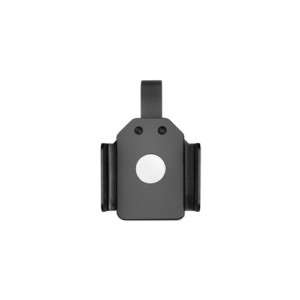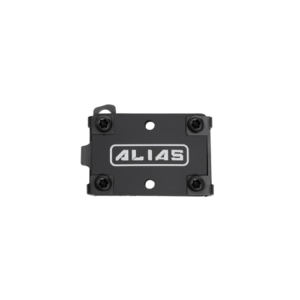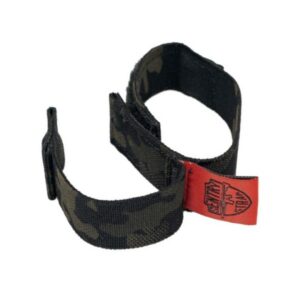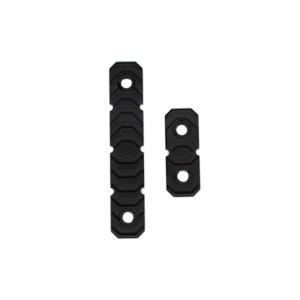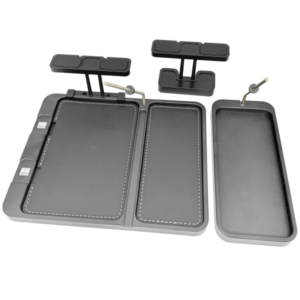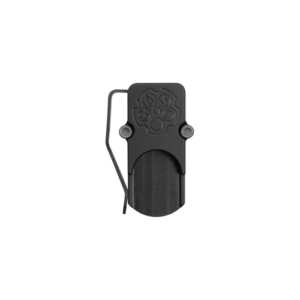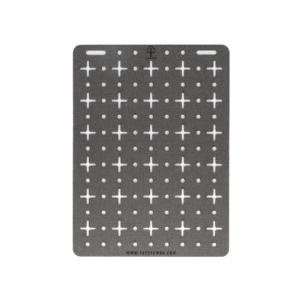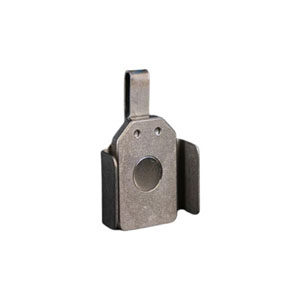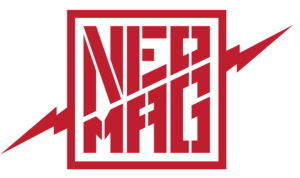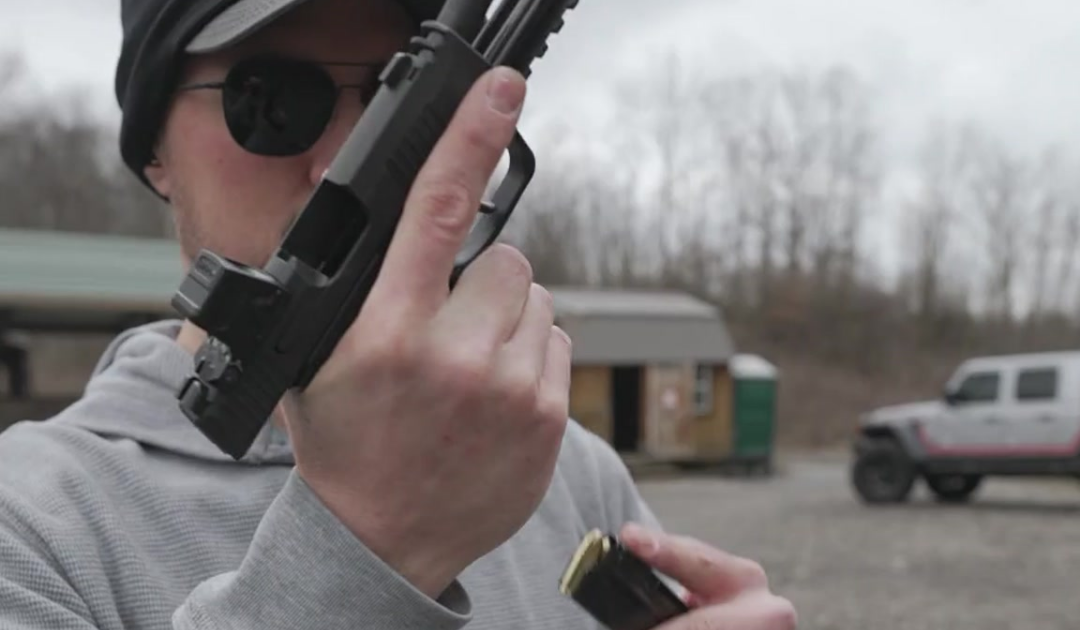Reload drills are essential for anyone serious about everyday carry (EDC). They help you learn how to reload your firearm quickly and efficiently so you’re prepared to react under pressure.
Whether transitioning to a new magazine or refining your grip, these drills build muscle memory and boost confidence, so your response becomes second nature.
Gear Preparation
Having the right tools is critical for effective reloading practice. For reloading drills, you’ll need:
- Holster: Use the same holster you carry daily for realistic practice.
- Magazine holder: A reliable magazine holder, like the NeoMag Magnetic Pocket Magazine Holder, for secure and consistent placement.
- Dummy rounds or snap caps: These provide a safe way to simulate live-fire conditions during dry-fire practice.
- Timer: Track your reload speed to measure improvement over time and set goals for faster, accurate reloads.
Practice Environment
You can practice reload drills safely in two primary environments: at home with dry-fire training or live-fire practice at the range.
Dry Fire Practice at Home
Dry fire practice is perfect for mastering reloading mechanics without the noise or recoil of live ammo.
- Set up a dedicated area for dry fire practice where you won’t be disturbed. This space should be free of distractions and separate from any location where live ammunition is stored.
- Double-check that your firearm is unloaded, and remove all live ammunition from your practice area. Eject the magazine and lock the slide open to visually and physically confirm that the chamber is empty. Perform a second check to verify the firearm is unloaded before beginning practice.
- Use dummy rounds or snap caps to simulate live-fire conditions safely. These tools allow you to practice magazine changes and chambering a round without risking accidental discharge.
- Always practice with a safe backstop in place. This can be a sturdy wall free of windows, doors, or people on the other side. Or an object designed to stop a bullet in the extremely unlikely event of a discharge.
- Set clear boundaries for your session to maintain focus and safety. This includes only handling your firearm within the designated area, stopping immediately if live ammunition enters the space, and prioritizing slow, deliberate movements to perfect your technique.
Live-Fire Practice at the Range
Once you’ve built confidence at home, head to the range to test your skills. Live-fire practice helps you experience the real feel of recoil and transitions, adding another layer of realism to your training.
Tips to Maximize Your Drills
Improving your reloading skills isn’t just about performing drills. It’s about practicing them effectively. Here are some tips to help you get the most out of your training sessions for long-term improvement.
1. Track Your Progress.
Using a timer or shot tracker is key to measuring improvement. Timers help you set benchmarks for reload speed, while shot trackers monitor your accuracy during live-fire drills. Review your times and set goals to decrease reload times without sacrificing precision.
How many seconds does it take to reload a pistol?
The time it takes to reload a pistol varies depending on the shooter’s skill level, experience, and situation.
- Beginner shooters: Typically, 5-7 seconds. Beginners will need extra time to identify the correct grip, locate the magazine, and insert it securely.
- Intermediate shooters: Usually around 3-4 seconds. With consistent practice, most shooters can perform a reload in this range during dry-fire or live-fire drills.
- Experienced shooters: Often 1–2 seconds or less. Competitive shooters or those who train regularly can achieve fast reloads due to honed muscle memory and efficient movements.
2. Practice From Realistic Carry Positions.
Your practice should mirror real-world conditions. If you carry concealed, perform drills from your typical carry position, whether inside-the-waistband (IWB) or outside-the-waistband (OWB). This builds familiarity with drawing and reloading from your preferred setup.
3. Use a Mix of Live and Dry-Fire Training.
Dry-fire training is an excellent way to focus on mechanics and muscle memory without distractions. Combine this with live-fire practice at the range to reinforce those skills in a more realistic environment.
How often should you dry-fire practice?
Aim to practice 3–4 times a week for consistent improvement. Each session can be as short as 10–15 minutes.
The key is consistency. Regular, focused practice helps you build muscle memory and refine your technique without requiring hours of commitment.
Top Reloading Drills
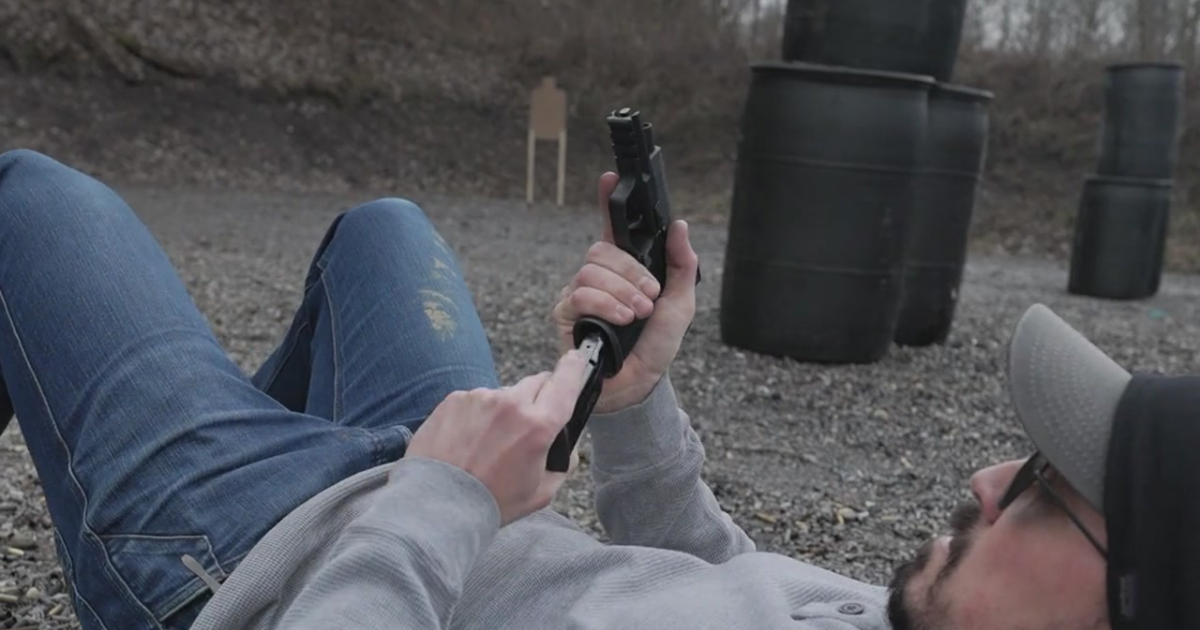
Here are three reloading drills you should focus on. Each one is designed to target specific skills and address common issues.
1. Tactical Reload Drill
This drill is ideal for low-threat scenarios where retaining your partially used magazine is important. It emphasizes methodical, deliberate movements over speed.
How to Practice
- Begin with a partially loaded magazine in your firearm and a fully loaded one in your holder.
- Grab a new magazine with your support hand.
- Eject the partially used magazine into your hand (I like to put this magazine between my ring finger and middle finger), insert the fresh one using the palm of your hand, and stow the used magazine in a pouch or pocket.
What it improves: Boosts magazine retention, builds readiness for extended engagements and minimizes wasted ammunition.
2. Emergency Reload Drill
When speed is critical, the emergency reload drill is your go-to exercise. It simulates a situation where your magazine is empty, and you must reload under pressure.
How to Practice
- Start with an empty magazine in your firearm with the slide locked back, and a loaded magazine in your holder.
- On a signal (or timer), eject the empty magazine, grab the spare, reload, and close the slide as quickly as possible.
What it improves: Develops the ability to reload quickly in high-stress situations so you remain operational in the heat of the moment.
3. The Bill Drill
The Bill Drill combines accuracy with reload speed, making it an advanced exercise for refining both skills.
How to Practice
- Set up a target at 7 yards.
- Start with 6 rounds in your magazine and fire all 6 as quickly as possible while maintaining accuracy.
- Perform a reload and continue firing another 6 rounds.
- Use a timer to measure your performance and track improvement.
What it improves: It builds confidence in executing fast reloads under time pressure while maintaining recoil control and shot placement on target.
Mistakes to Avoid During Reloading Drills
Even the most dedicated practice sessions will fall short if you make avoidable mistakes.
1. Overlooking Safety During Dry-Fire Practice
Safety should always come first, especially during dry-fire training. Failing to verify that your firearm is unloaded or neglecting to remove live ammunition from your practice area will lead to dangerous situations.
How to Avoid It
- Always double-check your firearm and magazines before beginning dry-fire drills.
- Use dummy rounds or snap caps to simulate reloads safely.
- Create a dedicated, distraction-free practice space to focus entirely on the task.
2. Rushing Drills Without Building Foundational Skills
Speed is important, but rushing through drills without mastering the basics will lead to sloppy technique. This reduces the effectiveness of your practice and reinforces bad habits that will be hard to break.
How to Avoid It
- Start slow. Focus on smooth, deliberate movements when practicing reloads.
- As you build muscle memory and confidence, increase your speed while maintaining precision.
- Remember, consistent progress is more important than immediate results.
3. Neglecting Realistic Scenarios
Practicing reloads in a static, unrealistic setup won’t prepare you for real-life situations.
How to Avoid It
- Incorporate scenarios that mimic your everyday carry setup.
- Practice reloads from concealed positions, seated positions, or even while moving.
- Use gear you carry so that your training reflects real-world conditions.
How NeoMag Helps Your Reloading
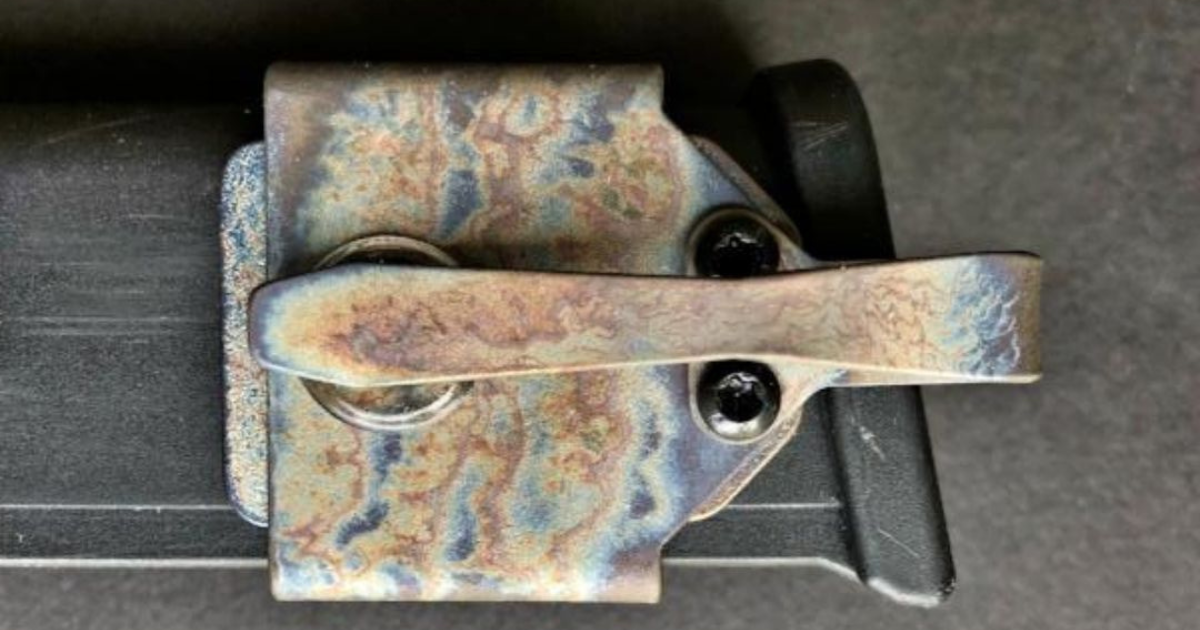
For efficient reloading, having the right tools is just as important as practicing the drills. NeoMag’s Magnetic Pocket Magazine Holder is a game-changer for reloading. Here’s how:
- NeoMag’s innovative design securely holds your spare magazine in your pocket, keeping it accessible. The magnetic retention system keeps your magazine in place until you need it.
- NeoMag’s sleek, low-profile design sits seamlessly into your pocket, allowing you to carry a spare magazine without adding bulk or compromising concealment.
- NeoMag is engineered to handle the demands of regular use so that your equipment performs as well on day 1,000 as it did on day 1.
NeoMag isn’t just an accessory – it’s an investment in preparedness. Because when your tools are as dependable as your skills, you’re better equipped to handle whatever comes your way.
Read NeoMag 101: What is a Magnetic Magazine Holder for more information.
Building Confidence Through Practice
Consistent practice with the right equipment helps your response become second nature, preparing you for real-world challenges. Stay prepared, stay confident, and make every practice session count.
Ready to level up your EDC setup? Explore NeoMag’s range of accessories and redefine your everyday carry experience.


